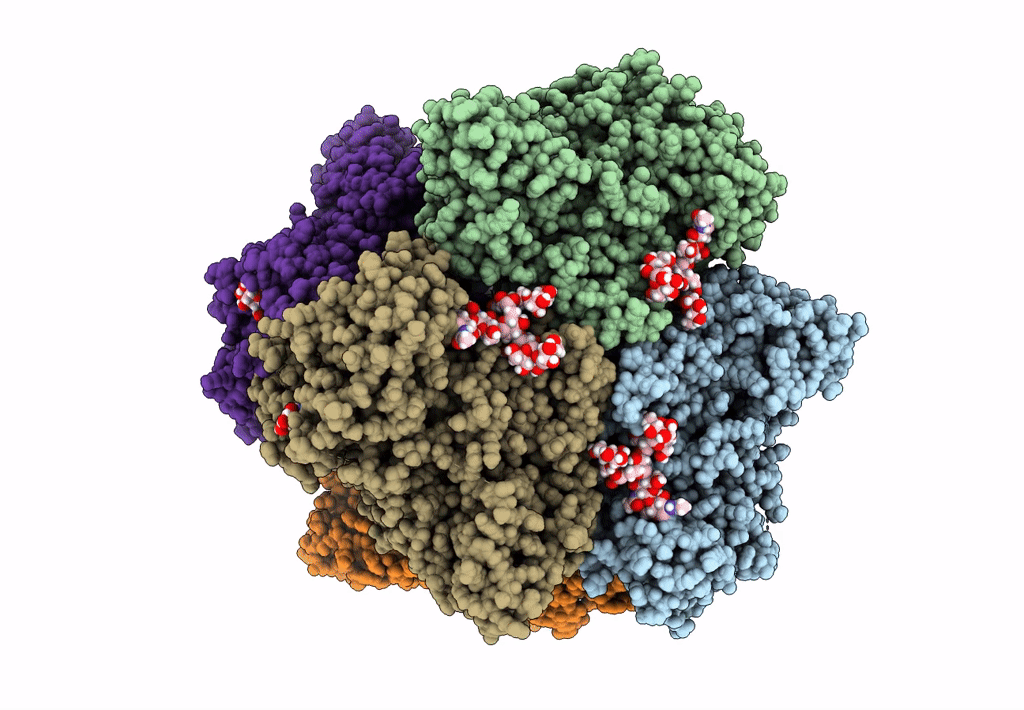
Deposition Date
2023-01-24
Release Date
2023-10-04
Last Version Date
2024-11-20
Entry Detail
PDB ID:
8CAD
Keywords:
Title:
Cryo-EM structure of the Ceres homohexamer from Galleria mellonella saliva
Biological Source:
Source Organism:
Galleria mellonella (Taxon ID: 7137)
Method Details:
Experimental Method:
Resolution:
2.85 Å
Aggregation State:
PARTICLE
Reconstruction Method:
SINGLE PARTICLE


